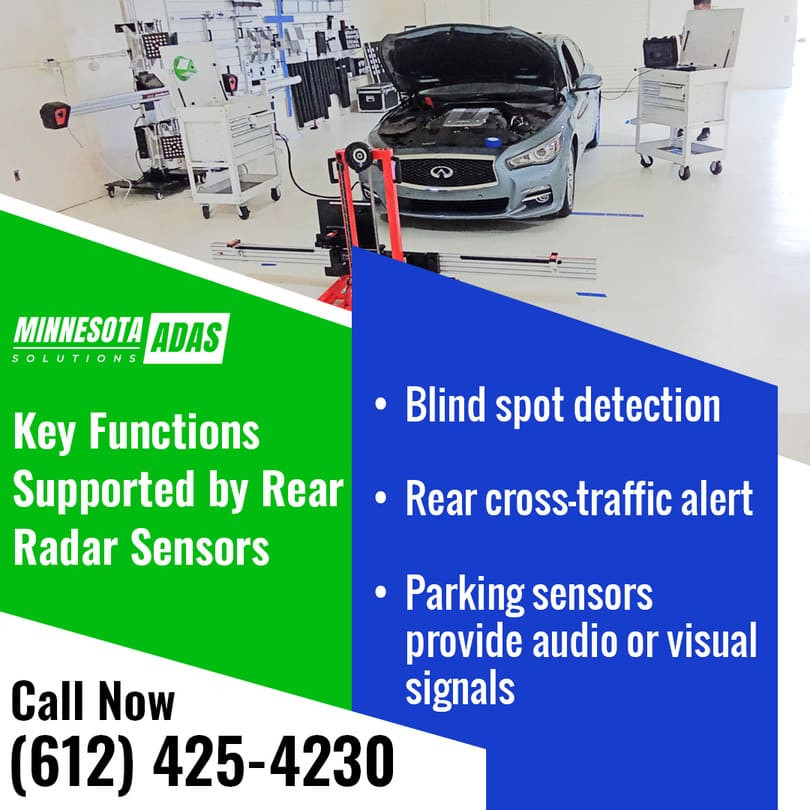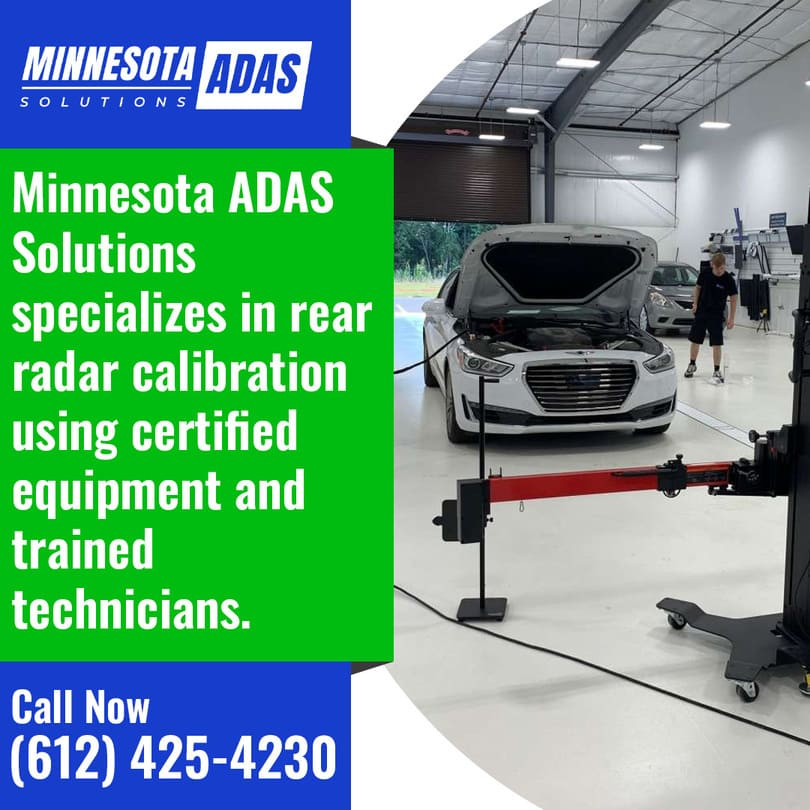Rear Radar Sensors: Why ADAS Calibration is Necessary After Repairs
Bloomington, United States - August 4, 2025 / Minnesota ADAS Solutions /
Bloomington, MN — Minnesota ADAS Solutions is addressing the growing need for precise calibration services following vehicle repairs, especially those involving rear radar sensors. Rear radar sensors are vital components in many modern vehicles’ safety systems. Even minor misalignment during repairs can cause these sensors to malfunction. The company uses controlled environments and certified processes to restore ADAS calibration systems according to manufacturer standards, ensuring vehicle safety features operate correctly.
What Are Rear Radar Sensors and Their Role in Vehicle Safety?
Rear radar sensors detect objects near the rear of a vehicle and support safety features that help drivers while reversing or changing lanes. These sensors send radio waves that reflect off nearby objects and calculate their location and speed. This information helps trigger timely warnings during low visibility or heavy traffic.
According to the Insurance Institute for Highway Safety (IIHS), vehicles with rear crash prevention technology experience up to a 78% decrease in backing crashes. This statistic highlights the impact of properly functioning rear radar sensors on road safety.
Key Functions Supported by Rear Radar Sensors
Rear radar sensors enable blind spot monitoring, rear cross-traffic alerts, and parking assistance. These systems add detection abilities beyond mirrors and cameras by identifying vehicles, pedestrians, bicycles, and fixed objects behind or near the vehicle.
Blind spot detection warns when a vehicle enters your blind spot, helping to prevent sideswipe collisions on highways.
Rear cross-traffic alert activates when backing out of a parking space, warning of vehicles approaching from the side.
Parking sensors provide audio or visual signals to indicate the distance to objects behind your vehicle, reducing the risk of collisions while parking.
How Vehicle Repairs Affect Rear Radar Sensor Accuracy
Repairs involving rear bumpers or quarter panels can cause small but critical shifts in sensor positioning. Even minor collisions or replacement of parts can misalign sensors, impacting their ability to detect nearby objects correctly.
Minor Collisions Can Cause Major Sensor Issues
A low-speed impact may appear minor, but it can shift internal mounting brackets by millimeters. This subtle movement may cause false alerts or missed warnings, affecting your safety system’s reliability.
Replacing Panels or Bumpers Changes Sensor Position
Removing or installing rear bumpers or panels can alter the sensor’s height or angle. If a replacement bumper isn’t aligned to factory specifications, radar beams may tilt incorrectly, distorting object detection. Rust repairs requiring sensor disconnection and remounting may also change factory settings.
Why ADAS Calibration Matters After Repairs
Rear radar sensors are among the most sensitive components in ADAS calibration safety systems. Calibration is necessary after any repair involving sensor mounts or panels to restore their original precision.
Risks of Radar Misalignment
If radar sensors are misaligned, they may not detect hazards or provide timely warnings, increasing accident risk. Misalignment affects multiple features, including blind spot monitoring and rear cross-traffic alerts. Invisible blind zones created by these errors leave drivers exposed in real conditions.
Manufacturer Calibration Requirements
Automakers require calibration after repairs to maintain warranty and liability protections. These procedures also meet legal and insurance standards. Skipping calibration can shift liability to repair shops or vehicle owners if system failures cause accidents. Minnesota ADAS Solutions follows exact manufacturer processes in a facility built to match factory conditions, providing consistent, safe results.
What to Expect from Professional ADAS Calibration Services
Professional calibration takes place on level floors with controlled lighting to reduce variables that affect sensor readings. Calibration targets are placed with millimeter accuracy according to OEM guidelines, avoiding guesswork.
Documentation of each calibration is standard, including alignment reports and sensor status logs. This documentation supports insurance claims and validates repair quality for body shops and vehicle owners.
ADAS calibration services typically require about 90 minutes. The calibration cost varies depending on vehicle complexity and sensor setup. Investing in calibration after repairs helps prevent future malfunctions and costly secondary repairs.
Minnesota ADAS Solutions: Precision and Accountability in ADAS Calibration
Minnesota ADAS Solutions specializes in rear radar calibration using certified equipment and trained technicians. Their controlled facility eliminates environmental factors that can reduce calibration accuracy. Every step follows manufacturer standards, ensuring your vehicle’s safety systems function as designed.
Serving Bloomington, Maple Grove, and surrounding areas, the company offers flexible scheduling and pickup and delivery options to minimize downtime for repair shops and vehicle owners.
Contact Minnesota ADAS Solutions for Reliable ADAS Calibration Services
Minnesota ADAS Solutions invites collision centers, insurers, and vehicle owners to schedule rear radar sensor calibration to maintain system reliability and safety after repairs. The company provides transparent information on ADAS calibration cost and full service documentation. To book an appointment or request more information, call (612) 425-4230 or email info@mnadas.com.

Contact Information:
Minnesota ADAS Solutions
9555 James Ave S
Bloomington, MN 55431
United States
CJ Peeters
(612) 425-4230
https://www.mnadas.com/
Original Source: https://www.mnadas.com/adas-calibration/rear-radar-sensors-why-adas-calibration-is-necessary-after-repairs/



